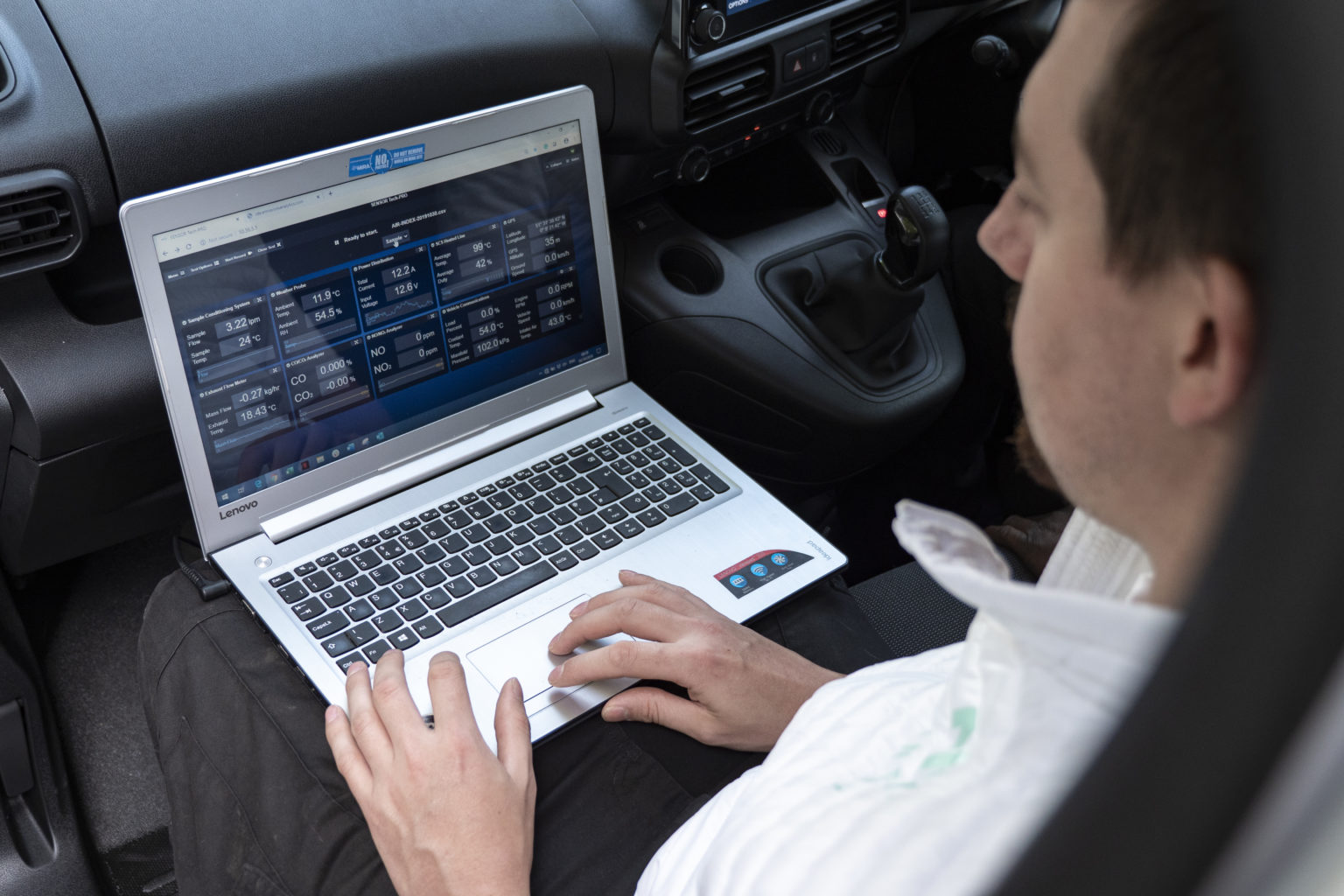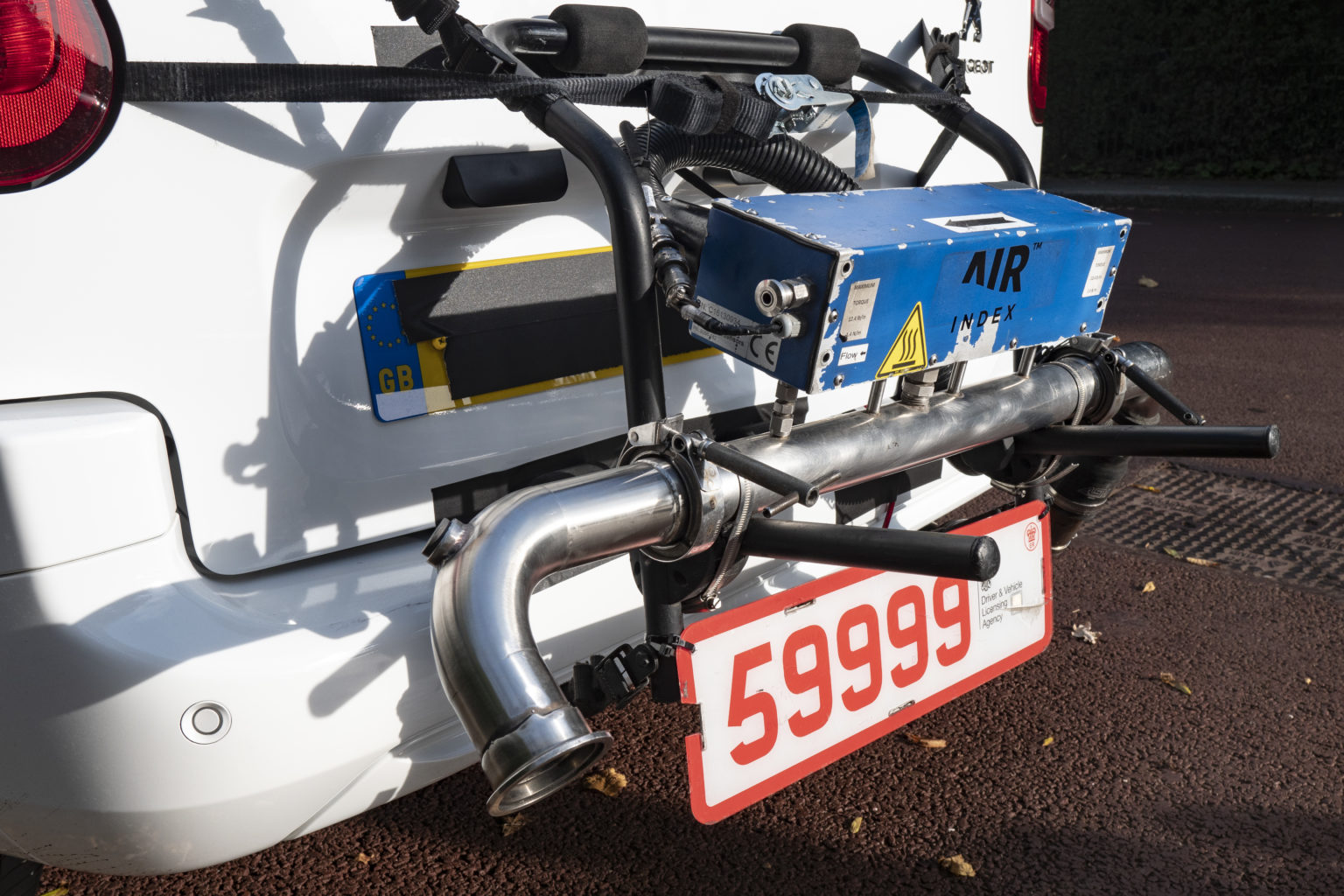Real-world Emissions
Real-world testing is an increasingly important part of environmental monitoring, used to verify that the actual emissions performance of vehicles is in line with what is officially declared.
What is real-world testing?
Typically, real-world emissions and fuel economy refer to the results of on-road testing using portable measurement devices. These have the benefit of authenticity, in contrast with the highly repeatable yet abstracted nature of laboratory testing.
Real-world testing is an increasingly important part of environmental monitoring, used to verify that the actual emissions performance of vehicles is in line with what is officially declared.
“Dieselgate” is the best-known example of where official ratings and reality drifted significantly apart due to the manipulation of the certification system. Extensive real-world surveillance would have spotted this earlier, and lessons have been learned in the recently updated regulatory protocols.
How is real-world testing conducted?
To measure the tailpipe emissions in real-world conditions, an analyser is attached to a vehicle sampling the exhaust gases in real-time during driving on the public highway.
The most common devices have their performance defined in the US CFR1065 or European Real Driving Emissions (RDE) regulations, which cover levels of accuracy and precision.
The AIR Alliance commissions tests using this high-specification equipment, and uses many of the same procedures for testing and calibration as required in certification testing.
But the AIR Alliance has gone further than the official RDE regulation, by adopting the latest European standardised methodology defined under the CEN Workshop process, CWA 17379.
This standard focuses on real-world urban NOX emissions and applies to vehicles certified prior to the RDE regulations. By doing this, the AIR Index allows the assessment of these pre-RDE vehicles in a way that was not achieved by the laboratory-only certification test. A Q&A on CWA 17379 can be found below.
How to check your vehicle’s real-world tailpipe emissions and fuel economy
You can find out the actual emissions and fuel economy of your car or van by using the AIR Index.
What is the urban NOX standard, CWA 17379 all about?
1. In summary, what has been agreed?
A group of industry scientists, academics and policy-makers has agreed a methodology, under the European CEN Workshop process, for the collection of real-world emissions data for the purposes of comparing vehicles. This enables the rating of vehicles of a wide range of ages and types, to create robust, independent and trustworthy data for consumers, fleets and policy makers. The aim is to fill the gap left by the discredited Euro regulations, creating a ratings system than can understood and trusted by consumers, fleets and cities.
2. What is CEN?
CEN stands for “Comité Européen de Normalisation”, and it is a process under European Union (EU) law that sets out a process for the standardisation of products, business processes and so on. The standards agreed under CEN are voluntary, not compulsory.
3. Why was it initiated?
A process was initiated under CEN that created “CEN Workshop 90”. It was initiated by Emissions Analytics Ltd (www.emissionsanalytics.com), a UK company that was a pioneer in real, on-road measurement of vehicle emissions. Emissions Analytics has been central in identifying the issues with elevated real-world emissions and devised its test methodology before the new Real Driving Emissions (RDE) regulation was introduced.
4. What is the difference between CWA, ISO, EN and regulations?
The workshop resulted in a “CEN Workshop Agreement” or “CWA” a document that sets out the details of the standardised method, according to the format prescribed by CEN. The use of a CWA is voluntary, which contrasts it with EN standards and regulations. CWAs are based on a consensus amongst the participating experts rather than being written explicitly into the law. They only have force within countries participating in CEN.
5. Who has been involved in CEN Workshop 90?
Emissions Analytics initiated the CEN Workshop and the chairman is Nick Molden, Chief Executive Officer of Emissions Analytics, and Co-founder of the AIR Alliance. Participation was open to anyone with an interest in the area. Over 40 experts participated, including cities, academics, the automotive industry, equipment manufacturers, non-governmental organisations, not-for-profit organisations and the European Commission. The process is sponsored and managed by UNI, the national standardisation body in Italy.
6. What is the CWA test cycle?
Each vehicle will be tested to yield a number of valid “trips”. For a trip to be valid, it should be at least 10km in length and with average speed between 20km/h and 40km/h. In addition, there are constraints around minimum and maximum acceleration and minimum and maximum gradient, set in line with typical urban driving. Tests must be conducted with ambient temperature between 10 and 20 degrees Celsius, at altitudes below a limit.
7. How many tests must be conducted?
In order for an overall result to be valid for a given vehicle, it is necessary to achieve at least five valid trips, drawn from at least three tests across at least two vehicles of the same type.
8. What is inside and outside of the scope of the CWA?
Within the scope of the CWA are all the elements required to conduct a comparable test. Outside of scope is the creation of any ratings system based on CWA-compliant results. The AIR Alliance publishes the AIR Index ratings based on the CWA methodology. The scope of the CWA test is limited to vehicles where there is a particular and pressing challenge, due to the failure of the New European Driving Cycle (NEDC) and the associated Euro standards: nitrogen oxides (NOx) from pre-RDE, non-hybridised diesel vehicles in urban driving.
9. What will the CWA allow to happen?
Cities and governments, under legal pressure, are being forced to bring air quality into compliance in a short space of time. The CWA offers the opportunity to target vehicle access restrictions in cities only to vehicles that are heavily polluting, rather than having to ban all vehicles within generic technology categories, e.g. all diesels. It is important to note than some diesels have very low emissions of NOX, as well as their typical CO2 advantage, while some gasoline vehicles are much higher emitting. Through targeted restrictions, the effects on vehicle owners and local economies can be minimised, consistent with meeting legal air quality requirements.
10. Why can’t these objectives be fulfilled by other official methods?
The old NEDC-based ratings have been demonstrated significantly to underestimate real-world emissions of nitrogen oxides – on average by a factor of five times. The new world harmonised certification cycle (WLTP) for vehicle type approval is a test still conducted in the laboratory and is not intended for retrospective certification. The new RDE regulation for NOX is unsuitable for evaluation of historical vehicles as almost all would fail the test, despite some being significantly cleaner than others.

